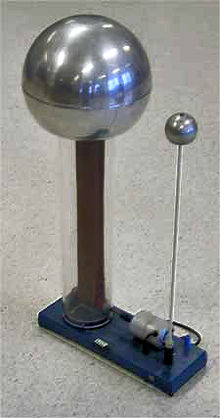
Back مولد كهروسكوني Arabic Електростатичен генератор Bulgarian Generador electroestàtic Catalan Elektrostatisk generator Danish Elektrostatischer Generator German Generador electrostático Spanish مولد الکترواستاتیکی Persian Gineadóir leictreastatach Irish स्थिरवैद्युत जनित्र Hindi Generatore elettrostatico Italian


An electrostatic generator, or electrostatic machine, is an electrical generator that produces static electricity, or electricity at high voltage and low continuous current. The knowledge of static electricity dates back to the earliest civilizations, but for millennia it remained merely an interesting and mystifying phenomenon, without a theory to explain its behavior and often confused with magnetism. By the end of the 17th century, researchers had developed practical means of generating electricity by friction, but the development of electrostatic machines did not begin in earnest until the 18th century, when they became fundamental instruments in the studies about the new science of electricity.
Electrostatic generators operate by using manual (or other) power to transform mechanical work into electric energy, or using electric currents. Manual electrostatic generators develop electrostatic charges of opposite signs rendered to two conductors, using only electric forces, and work by using moving plates, drums, or belts to carry electric charge to a high potential electrode.